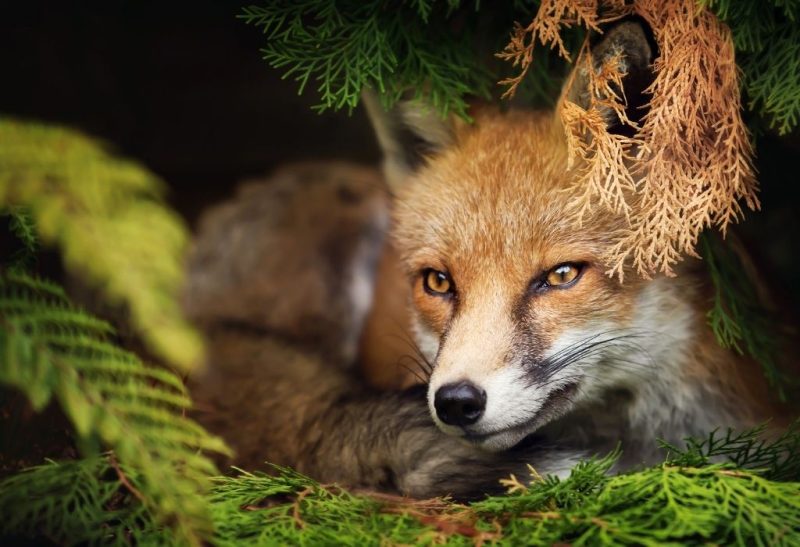When you envision a fox, you would usually think of the red fox type – orange to reddish-brown in color with white underfurs, long guard hairs, white-tipped tails, and black legs and ears. However, this is not always true. Do you know that there are actually a lot of fox species in the kingdom Animalia? Up to this day, about thirty (30) fox species are scattered in different parts of the world.
Here are the most common types of foxes:
- Tibetan Fox
- Rüppell’s Fox
- Pale Fox
- Kit Fox
- Corsac Fox
- Blanford Fox
- Cape Fox
- Common Fox or Red Fox
- Fennec Fox
- Bengal or Indian Fox
- Arctic Fox
- Swift Fox
- Silver Fox
- Gray Fox
Now that you have realized that foxes have different types, you should get to know these classifications by discovering more about their common kinds and the rarest, friendliest, and biggest species among them.
Table of Contents
How Many Types of Fox Species Are There?
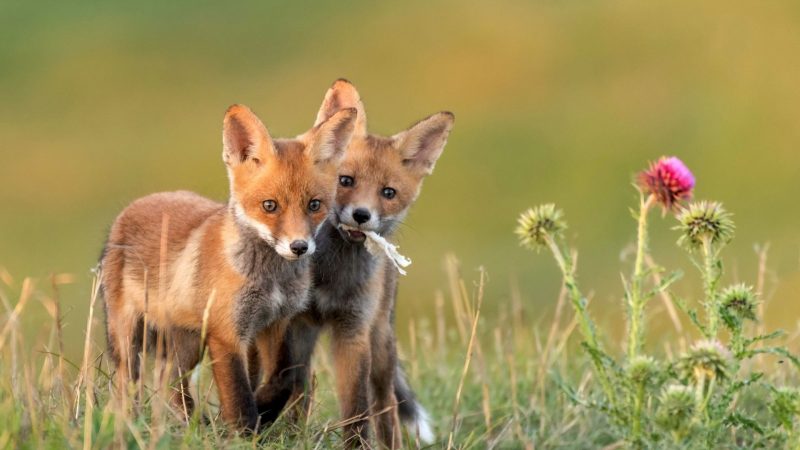
There are more or less thirty species of foxes in almost every region of the world. Out of the said number, twelve are considered “true foxes” that belong to the genus Vulpes. This includes the most common fox species with forty-seven known subspecies, the red fox. The others are part of the current and rare kinds. They might belong to either the paraphyletic class of the South American group or the outlying class comprising of the gray fox, island fox, and bat-eared fox.
Fox Characteristics
Foxes can be characterized by the following appearance and traits:
Fox Appearance
Their bodies are small to medium inbuilt and covered with thick fur. They have snouts that are sharp and pointed upward. Their skulls are somewhat flattened. Also, they have triangular ears with tails that are bushy and extensive.
Fox Behavior
They became active during the night, where they would usually search and hunt for food. These animals are often considered nocturnal creatures, as evidenced by their excellent eyesight during dusk time. However, due to the influx of foxes in urban spaces, and some held in captivity, they have learned to switch their sleeping schedules with that of humans’.
Most of the foxes are solitary animals. But with the familiarity with people and urban places, some have dealt with the presence of humans. They don’t usually cause harm or injuries to individuals or pets. But may attack if they will be in a compromised situation, going through extreme starvation, or afflicted with the rabies virus.
Also, they are known to be omnivores and typically get their provisions through hunting. They have the tendency to forage for excessive food and store them under the plants, soil, or snow.
As to their mode of communication, they use sounds, tail gestures, and other non-verbal methods.
14 Common Types of Foxes
Tibetan Fox (Vulpes Ferrilata)
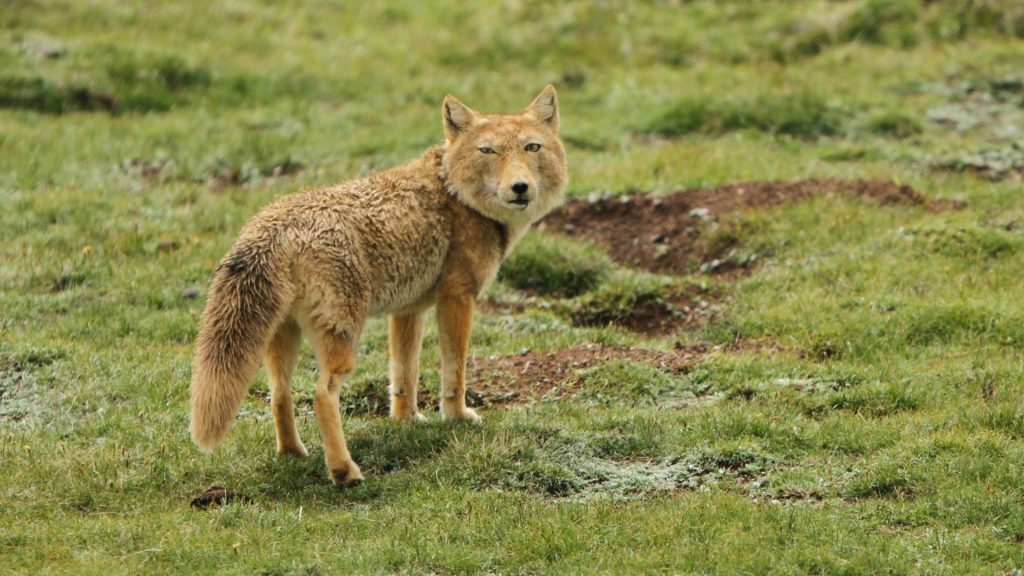
- Appearance: Their faces have a unique square structure, while their ears are small, triangular, and located close to their heads. The Tibetan foxes’ tails are long, bushy, and have white tips. Also, their body coats are dense and thick, which gives them protection from the effects of strong winds.
- Lifespan: They can live for up to 8 to 10 years.
- Body Length: Adult Tibetan foxes are 24 to 28 inches in length, with tails measuring 14 to 16 inches.
- Weight: Adult Tibetan foxes weigh 8.8 to 12.1 pounds.
- Colors: They have soft, red fur, white underbellies, and grey undercoats.
- Place of origin: They can be found from the Tibetan plateau of China, India, specifically the Sutlej Valley of the northwestern part, and some areas of Nepal, particularly in the Mustang District.
- Characteristics: They have excellent hearing skills that are essential in hunting. The Tibetan foxes reside in a burrow during the day and are regularly found in areas where pikas are present.
- Threat: There are no major threats. However, the poisoning or loss of pikas can be a threat to their survival as it is their food source.
Rüppell’s Fox (Vulpes Rueppellii)

- Appearance: They have very large ears, long whiskers, and smaller legs with thick fur on the pads of their feet. This enables them to adapt to the extreme weather of the desert.
- Lifespan: They can live for up to 7 to 12 years.
- Body Length: They have a total length of 26 to 29 inches, with a tail measuring 11 to 12 inches.
- Weight: Their average weight is 3.7 pounds.
- Color: Their bodies have a sandy brown coating with white hairs and fading red hue at the back. They have white underbellies and tail tips, while their heads have a darker shade, specifically on the forehead and muzzle.
- Place of Origin: They are endemic in North Africa, particularly in the southern part of the Atlas Mountains and extending to Morocco, Mauritania, and Egypt. This type can also be found in Southwestern Asia and the Arabian Peninsula, including Palestine, Jordan, Syria, Iraq, Pakistan, and Afghanistan.
- Characteristics: They are nocturnal creatures as they are active during twilight and night. During the day, they stay inside their dens which are usually located under trees and rocks. Their territories are marked using their urine. They utilize their anal scent glands in greeting other foxes, but they can also communicate through trills, whistles, and barks. These foxes have omnivorous diets and have monogamous mates when they breed.
- Threat: Their presence is threatened by regular hunting or incidents of poisoning.
Pale Fox (Vulpes Pallida)
- Appearance: They have extensive bodies but short legs. Pale foxes have elongated and narrow snouts, large ears, lengthy and bushy tails, and long whiskers. Their faces are pale, and dark circles surround their eyes.
- Lifespan: They can live for not more than ten years.
- Body Length: They measure 15.7 to 17.7 inches, while their tails are at 9.8 to 12 inches.
- Weight: They weigh 4.4 to 6.5 pounds.
- Color: They have sandy brown bodies and white underparts. Their backs have a darker or blackish hue, specifically on the mid-dorsal line. These foxes’ tails have black tips.
- Place of Origin: They are prevalent in Senegal, Somalia, and the northern part of Sudan.
- Characteristics: They thrive at nighttime. These foxes are sociable creatures, so they usually have no enemies. They typically live with a female and two male adults, while their diet is both meat and vegetation such as birds, mammals, insects, reptiles, and wild melons.
- Threat: There are no major threats as to their presence.
Kit Fox (Vulpes Macrotis)

- Appearance: They are one of the smallest fox species. The Kit foxes have large ears, pointed noses, long legs, slender bodies, and thick fur on their feet. This is beneficial when they walk and run on the sand.
- Lifespan: They can live for seven years in the wild, and if they are held captive, they can live for up to twelve years.
- Body Length: Their bodies measure 17.9 to 21.1 inches, while their tails have a length of 10.2 to 12.7 inches.
- Weight: Their average weight is 3.5 to 6.0 pounds.
- Color: Their bodies have light sand to yellowish colors, while their guard hairs have black tips. They have paler inner ears and bellies, while their backs have a darker shade. The tips of their tails are also black.
- Place of Origin: They are mostly found in the US States like Oregon, California, Nevada, Colorado, Utah, Arizona, New Mexico, and Texas.
- Characteristics: They are active during the dusk time and do not go into hibernation. These animals have a peculiar sense of smell and hearing. The Kit foxes can also run in a quick manner but in short distances. They love to burrow and dig dens on the sand or under bushes and plants.
- Threat: They are threatened by other animal predators, such as feral dogs, red foxes, coyotes, bobcats, and large raptors. These animals can also go extinct due to loss of habitats and agricultural use of rodenticides and pesticides.
Corsac Fox (Vulpes Corsac)

- Appearance: They have large legs, long and pointed noses, wide skulls and tiny teeth. As to body structure, they are slightly smaller than the red fox species.
- Lifespan: They can live for up to nine years in the wild and thirteen years in captivity.
- Body Length: Their head and body measure 18 to 26 inches, while their tails are 7.5 to 13.8 inches in length.
- Weight: Adult corsac foxes weigh 3.5 to 7.1 pounds.
- Color: They have upper body structures that are mostly grey to reddish-grey in the shade with a mix of silver hues. The Corsac foxes’ underparts are a combination of yellow and white. Their chin, mouth, and throat have pale and light markings.
- Place of Origin: They are predominant in the lower Volga river across Central Asia and in countries such as Tibet, Mongolia, Uzbekistan, Kazakhstan, Turkmenistan, Afghanistan, Iran, Kyrgyzstan, Tajikistan, China, and in some areas in Russia.
- Characteristics: They have excellent abilities in climbing but not so much in the running. These foxes have a superior sense of smell, hearing, and sight, which they use when hunting or traveling. They often migrate from one place to another, as they usually do not have permanent habitats. This type typically lives in groups and small hunting packs. They are known to be nocturnal animals in the wild.
- Threat: Constant hunting, plowing of agricultural lands, and commercial use of their fur have contributed to the reduction of their populations.
Blanford Fox (Vulpes cana)

- Appearance: They are a small type of foxes. These foxes have slender noses, extensive tails, long guard hairs, and wide ears, which they use to dissipate extreme heat. They somewhat look like cats.
- Lifespan: Their average longevity is 4 to 5 years but may extend up to 10 years.
- Body Length: Their average length is 16.77 inches.
- Weight: They weigh 3.30 to 6.61 pounds.
- Color: Their coloration may range from grey, brown, or black. The undersides of this type of foxes are yellow, while their backs have a black striation. They also have paler flanks. The tips of their tails are usually dark.
- Place of Origin: They originate from Central Asia and the Middle East. These foxes are widely known in Israel, Pakistan, Iran, Kazakhstan, United Arab Emirates, and Afghanistan.
- Characteristics: They are active during the night and are known to be nocturnal hunters. This type of foxes search for food solitarily and are adept climbers and jumpers. They have a keen sense of smell, sight, and hearing, and they communicate with other animals through sounds and chemical signals.
- Threat: Constant trapping and hunting are a threat to their population.
Cape Fox (Vulpes chama)

- Appearance: They have large and sharp ears with snouts that are small and pointed. Also, they have slender bodies, thick hairs on their underfur, and long and bushy tails.
- Lifespan: They can live for 6 to 10 years.
- Body Length: Their bodies have a length of 17.5 to 24.5 inches, while their tails measure 12 to 15.5 inches.
- Weight: They typically weigh 5.5 to 9.9 pounds.
- Color: Their bodies, faces, necks, and chests are reddish-brown to light brown or nearly white in color. Also, their underparts are pale brown, while their legs are tawny, although the back of their thighs has dark markings. The tips of their tails have a black shade.
- Place of Origin: They originate from African countries like Angola, Botswana, South Africa, Ethiopia, and Namibia.
- Characteristics: They are very active during the early morning and early evening. These foxes are nocturnal and solitary when it comes to hunting and foraging food. During the day, they would stay on burrows and dens they dig. They mark their respective territories with their strong body scent and use light chirps, whines, and soft calls in communicating with other animals.
- Threat: Most cape foxes die from diseases, such as rabies and canine distemper. Others are killed by hunting and vehicles crossing the road.
Common Fox or Red Fox (Vulpes vulpes)
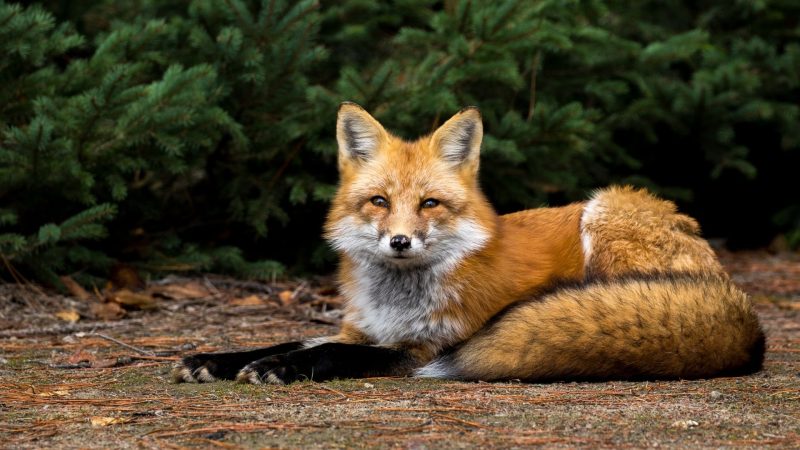
- Appearance: They have a resemblance to dogs. These foxes have pointed and elongated snouts. Also, they have large and triangular ears that are directed upwards, elliptical eye pupils, and bushy tails. They have long and slender legs and blunt claws.
- Lifespan: They can live up to 3 to 4 years in the wild and 10 to 12 years when held captive.
- Body Length: Their total body length is 12.5 to 46 inches, while their tails measure 11.5 to 16 inches.
- Weight: They weigh 7.5 to 15 pounds.
- Color: Their upper body parts, including their heads and tails, are yellowish to reddish-orange in color. Also, their nose pads, back of ears, tail tips, legs, and feet are black, while their bellies, throats, and cheeks have a whiter shade.
- Place of Origin: They are natives of the boreal areas of North America, Europe, North Africa, and Asia.
- Characteristics: They are active all year round, especially during dusk and night time to hunt for food. When they are seen scavenging for provisions during the day, they are probably foraging for their offspring. They move by running or walking, but they also have the ability to swim. These foxes deposit urine and feces on their territories as their way of marking. They communicate with other animals through shrills, screeches, and barks or with the use of their musk glands and motion patterns.
- Threat: Significant causes of their mortality include diseases, such as rabies, sarcoptic mange, and canine distemper, hunting and trapping activities, and the presence of biological enemies.
Fennec Fox (Vulpes zerda)

- Appearance: They are considered the palest among all the foxes. These foxes have coats that are long and soft and tails that are bushy. They have large ears that help in dispelling the desert heat and fur-covered paws that give proper traction when they run.
- Lifespan: They can live for up to 11 years.
- Body Length: Their bodies are 14 to 16 inches, while their tails have a length of 7 to 12 inches.
- Weight: They typically weigh 2 to 3 pounds.
- Color: Their bodies are covered with a reddish cream coat to light fawn or white in color. Also, their undersides have a whiter shade, while the tips of their tails are black.
- Place of Origin: They are natives of the desert and arid areas of the African and Arabian regions.
- Characteristics: They are active when the night strikes while they rest on their burrows during the day. These foxes are regarded as territorial creatures, and they mark their habitats with their feces and urine. They hunt solitarily during the evening and can catch and kill prey that is larger than them.
- Threat: There are no major threats as to their presence, but frequent hunting, trapping, and illegal pet trade increase their risk of underpopulation.
Bengal or Indian Fox (Vulpes bengalensis)
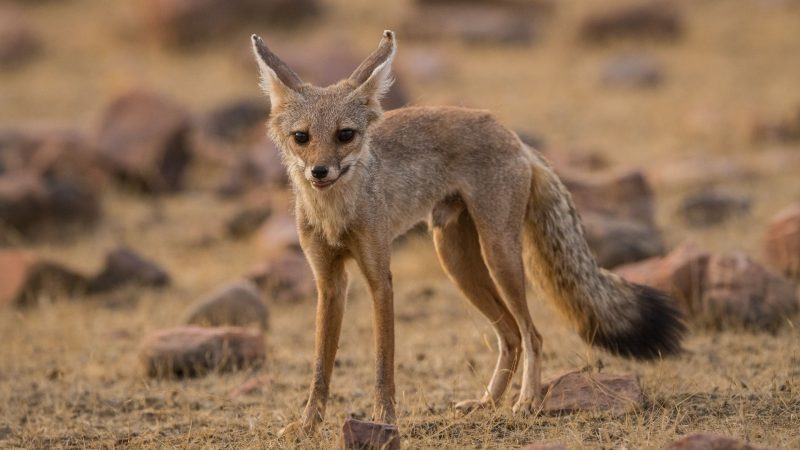
- Appearance: They have medium-sized bodies with elongated snouts, large, pointed ears, long, bushy tails, and sharp canine teeth. Their long ears are used for thermoregulation, and their tails account for almost 60% of the length of their bodies.
- Lifespan: Their average lifespan is from 10 to 12 years.
- Body Length: Their body length ranges from 18 to 24 inches.
- Weight: They weigh 4.98 to 9.21 pounds.
- Color: Their upper body structures have a light brown to silver-gray tinge, while their underparts have a light sandy or ginger color. Also, their legs are somewhat brownish.
- Place of Origin: They originated from the Indian subcontinent, which includes countries such as Nepal, Pakistan, and India.
- Characteristics: They are nocturnal creatures, although some have been indulging in daytime hunting. This type of foxes are solitary when they forage for food, and most of them are tame when they encounter humans. Also, they mark their territories with the use of their feces and scent. They communicate with others through whimpers, growls, cries, and whines.
- Threat: Common threats include biological enemies, constant hunting, road accidents, and loss of natural habitats.
Arctic Fox (Vulpes lagopus)
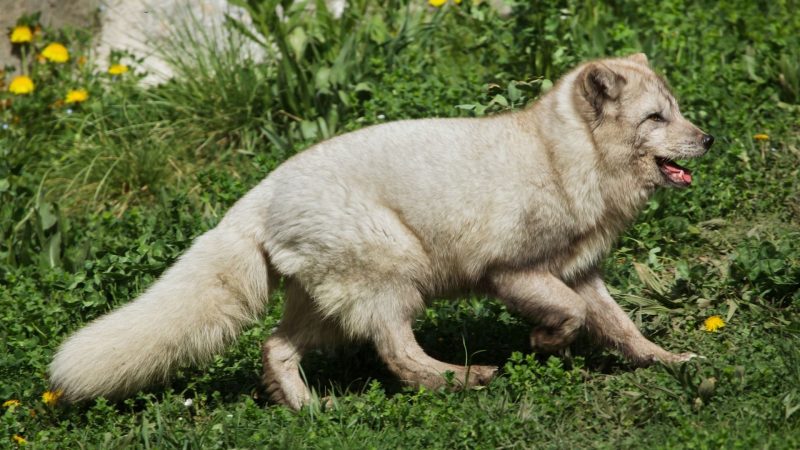
- Appearance: They have small to medium body structures, small ears, short muzzles, and fur-filled soles.
- Lifespan: They can live for 3 to 4 years in the wild and up to 14 years when held captive.
- Body Length: The length of their head and body may reach 18 to 26.6 inches, while their tails may measure 10 to 17 inches.
- Weight: They weigh 4 to 20 pounds.
- Color: They have white coats during the winter, which will typically turn brown or gray upon arrival in summer. The iris of their eyes may be golden or yellow-orange in color.
- Place of Origin: They came from the Arctic regions of Greenland, Iceland, North America, and Eurasia.
- Characteristics: They are active throughout the year and do not hibernate. These foxes can move comfortably on snow and ice and can even swim in the cold arctic waters. They thrive in a nomadic way of life and can feed on any animal available, whether dead or alive.
- Threat: Primary threats of their population include regular hunting and the presence of natural predators like red foxes.
Swift Fox (Vulpes velox)

- Appearance: They are considered the smallest members of the canid family in North America, as they are about the size of a cat. These foxes have bushy tails and pointed ears.
- Lifespan: Their average lifespan in the wild is 3 to 6 years and 12 to 14 years in captivity.
- Body Length: They have a body length of 15 to 21 inches, while their tails can reach up to 10 inches.
- Weight: They weigh 4.41 to 6.61 pounds.
- Color: Their fur is typically light gray, while their sides and legs are orange to tan. Also, their chests, throats, and insides of ears are white, and the sides of their snouts have black markings. Lastly, their tails have black tips.
- Place of Origin: They are originally from Western Canada, North American plains, including Texas.
- Characteristics: They are fast runners and can reach the speed of 50 km/hour, especially when they are being threatened by natural enemies or hunting for food. Also, they are active during nighttime and usually stay in their dens when the sun is out.
- Threat: There is a reduction of their population due to the presence of natural enemies, like coyotes and raptors, loss of habitats due to urban, agricultural, and industrial developments, and hunting.
Silver Fox
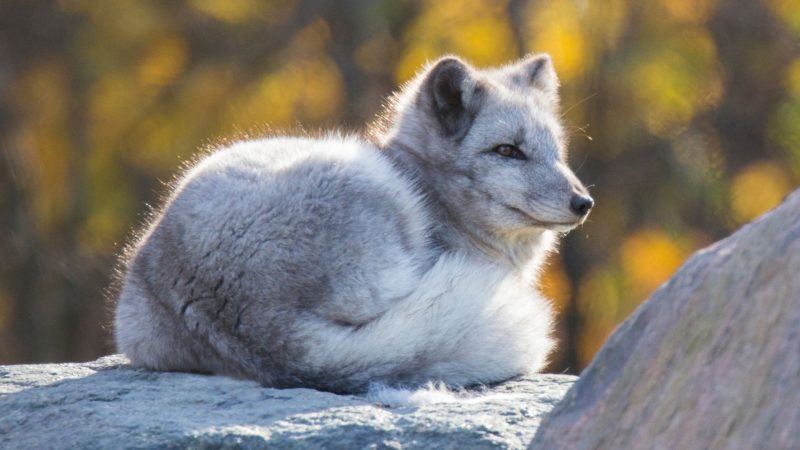
- Appearance: They have long outer hairs (up to 2 inches), pointed ears, and bushy tails. Also, they have short fur on their limbs and foreheads, while the soles of their feet are enveloped with thick hair.
- Lifespan: They can live for 3 to 4 years in the wild and 10 to 12 years in captivity.
- Body Length: The length of their heads up to their tails is 40 inches.
- Weight: They may weigh 11 to 15 pounds.
- Color: Their fur is brown or black on the base and silver-grey on the top. They have snouts and ears that are somewhat darker in the shade, and the tips of their tails are white in color
- Place of Origin: They are located mainly in North America.
- Characteristics: They are solitary and nocturnal creatures, especially when they hunt for food. Also, they show their dominance over their territories by scent marking and will typically feed on anything offered to them. As to their breeding behavior, they exercise monogamous mating.
- Threat: Reduction of their population may be due to biological enemies and frequent hunting.
Gray Fox (Urocyon cinereoargenteus)
- Appearance: They have pointed ears and snouts, long, bushy tails, and long, hook-like claws.
- Lifespan: They can exist in the wild for 6 to 8 years and 10 to 12 years in captivity.
- Body Length: They have a total body length of 29.9 to 44.3 inches, while their tails range from 10.8 to 17.4 inches.
- Weight: They usually weigh 7.9 to 15.4 pounds.
- Color: Their body structures are gray in color, while their sides, bellies, chests, feet, and legs are yellowish-brown. They have tails which are black stripes and white tips.
- Place of Origin: They are natives of North America.
- Characteristics: They are very adept at climbing and descending from trees with the use of their strong claws. These foxes are active during evenings, and when it’s daytime, they are usually found in their dens and burrows.
- Threat: They are threatened by hunting, natural predators, such as coyotes and bobcats, and diseases caused by rabies and canine parvovirus.
Frequently Asked Questions
What Is the Rarest Fox?
The Sierra Nevada Red Fox is considered as one of the rarest animals in North America. It was spotted in the Yosemite National Park, California last year 2015, for the first time in over a hundred years.
What Is the Friendliest Type of Fox?

Gray foxes are among the friendliest types of foxes. They are calm and affectionate in the presence of people and can be taken care of as house pets.
What Is the Biggest Fox Type?
The Red foxes are considered the biggest fox type. They have an average weight of 10 to 11 pounds and the average length of 36 to 43 inches.
How Big Can a Fox Get?
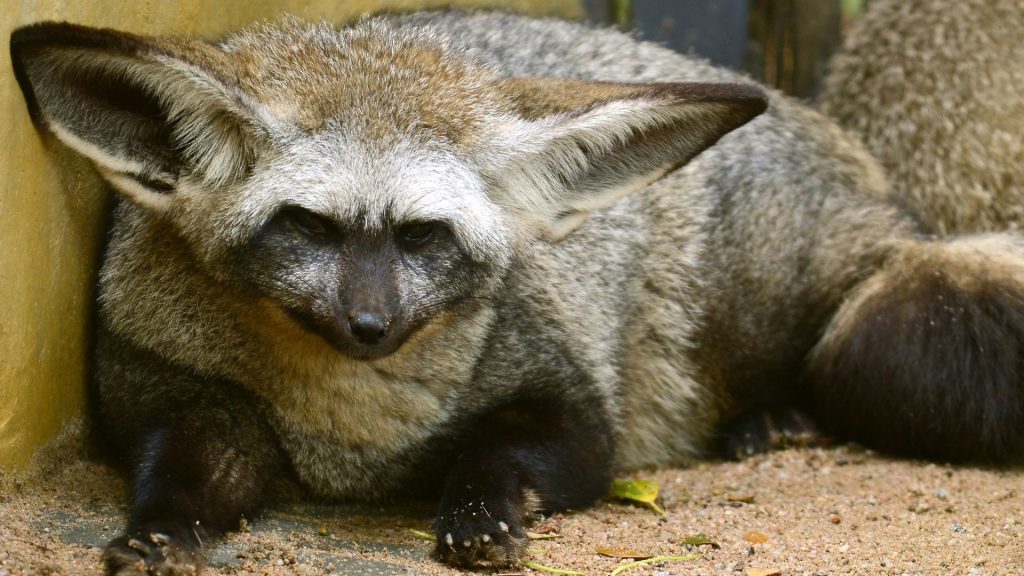
The biggest fox on record was slain in the United Kingdom. Based on this fact, a fox can be as heavy as 38 pounds and can be as high as 4 feet and 9 inches.
Summary
There are over 30 species of foxes around the world. To identify and distinguish one from the other, it is beneficial to look at their distinct traits, characteristics, and behaviors. However, most of these species are similar as to their sleeping schedules, hunting activities, and food preferences.
List of Sources
Swift Fox – Vulpes Velox. Montana’s Official State Website.
Red Fox. Missouri Department of Conservation.
Gray Fox (Urocyon Cinereoargenteus). University of Minnesota.
